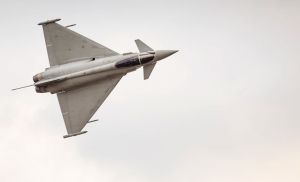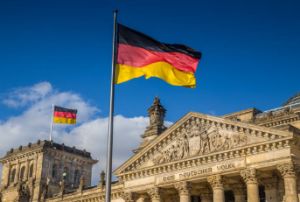This is purely a desire of the Army and the Ejercito de Tierra and not of the helicopter manufacturer itself. Considered as a mid-life modernisation of the Eurocopter EC-665 Tiger fleet, the "Mark 3" will only concern Spanish and French users, Germany having decided to turn its back on it. The more time goes by, the more this project looks like a stopgap measure designed to keep a European combat helicopter that is totally unsaleable for export alive. For the record, even Australia is getting rid of it in favour of the Boeing AH-64E Guardian.
We could talk for hours about Germany's recent false leaps in European programmes, but the fact remains that, objectively speaking, the Tiger UHT was never really adapted to the needs of the Heeresflieger. It is an aircraft conceived during the Cold War, built just after its end and adopted at a time when asymmetric warfare had become the norm. Asymmetric wars in which contemporary Germany actually participates very little, as the country still cultivates an aversion to warlike engagement. When you look back at its recent history, you can immediately see why.
In fact, it would be too easy to consider that Berlin is to blame for the commercial failure of the Tiger and for the abandonment of its participation in the "Mark 3" programme. France also has its share of responsibility, not the France of today but the France of the 1970s and 1980s that wanted its combat helicopter to try to play in the same league as the Americans and the Soviets. That is, the France of Giscard d'Estaing and Mitterrand. This France which did everything to unite Aerospatiale and M.B.B. within the same structure, also playing on a German will of European unity around the European industry. The Tiger was the common dowry of the Germans and the French at the birth of Eurocopter. We are paying the price today.
Yes, the Tiger is a formidable tool and a first-rate weapon. But probably only for the Army's Light Aviation, for whom it was really designed. It is a combat helicopter perfectly adapted to sub-Saharan Africa, the Middle East and Afghanistan where it was like a rooster in dough. For their part, the Fuerzas Aeromóviles del Ejército de Tierra are happy with it, without making too much noise for the moment. After all, isn't Spain the El Dorado of European aeronautical programmes?
Except that the Russian invasion of Ukraine has completely reshuffled the cards. France is now persona non grata in its former African colonies. Not a moment too soon, some would say. They swapped the rouble for the CFA franc, thinking they were getting a bargain. History will tell us if they were right to prefer Moscow's autocracy to Parisian paternalism. The fact remains that the Tiger no longer has a place in this region of the world. Nor does it currently seem to have a place in Eastern and Northern Europe.
However, this does not matter, as Paris and Madrid continue to want Airbus Helicopters to modernise the EC-665 Tiger. Not all of them, however, as budgets are not infinitely expandable since the helicopter in question is a commercial disaster almost comparable to Concorde. It is not selling, and the ten-year projections are not encouraging at all. As it no longer fights, it no longer demonstrates its capabilities, and as a result its competitors are taking over the markets. The Tiger is also expensive, a little more than its American rivals and frankly more than the Chinese and Russian competition.
Of the sixty-seven Tiger aircraft in service, the ALAT will only entrust forty-two to Airbus Helicopters in order to bring them up to the "Mark 3" standard and the FAMET will leave out six of their twenty-four machines. This is not much when we know that this modernisation should allow the aircraft to remain operational and efficient until around 2045.
So on paper this Airbus Helicopter Tiger "Mark 3" is not revolutionary. It is the avionics that will be revised and corrected with better connectivity to the systems. This will allow it to remain a formidable tool for the ALAT and the FAMET, but not necessarily to give it back what it so cruelly lacks internationally: competitiveness. At the end of February, the Minister of the Army, Mr. Sébastien Lecornu, was not very optimistic when he discussed the helicopter with the senators. He insisted on the fact that, according to him, France was going to have a super helicopter that would already be overtaken by MALE combat drones. And for the time being, without any political orientation, we can only agree with him.
But in the end the Tiger "Mark 3" will probably be built, it remains to be seen whether it will really be adapted to the battlefields of the future or whether it will be too modern for them.
The future will tell us.
NI ACQUIRES GERMAN TESTER MANUFACTURER SET
NI (formerly National Instruments) has announced the acquisition of Germany's SET, a long-standing manufacturer of aerospace and defence test systems that has recently expanded into reliability testing of power semiconductors in SiC and GaN technologies.
Together, the two companies expect to reduce time-to-market for differentiated solutions for the testing of silicon carbide (SiC) and gallium nitrite (GaN) power semiconductors. NI first announced a strategic minority investment in SET in 2020 to help aerospace and defence companies address soaring development costs and integration challenges.
These collaborative efforts will continue with a focus on sustainable civil aviation, space launch vehicles and urban air mobility applications. Going forward, the acquisition will expand NI's opportunities in automotive power semiconductor reliability systems, a high growth investment area.
"By offering new dynamic test procedures, SET ensures the qualification of silicon carbide (SiC) power semiconductors for the automotive industry with high accuracy and reliability," explains Frank Heidemann, SET's founder.
"The automotive supply chain is going through a transformation where OEMs and semiconductor players are rapidly innovating on new technologies. The ability to adequately specify and predict the behaviour of these new technologies within new electric vehicles is critical for performance and safety. SET is a clear innovator in this area as well as an established supplier in the field of avionics testing. NI is a world leader in automated test and measurement systems. By combining their capabilities, NI and SET can offer more differentiated solutions to customers and grow together by leveraging NI's global scale," added Ritu Favre, executive vice president of NI.
SET specialises in hardware-in-the-loop (HiL), functional and power semiconductor test systems and electronics development for the aerospace industry. SET is headquartered in Wangen, Germany, and employs approximately 100 people who will join NI.
Air passenger traffic will return to its 2019 level this year and even exceed it, the International Civil Aviation Organization estimated on Wednesday
The world passenger traffic will return this year to its level before the pandemic of coronavirus, before exceeding, at the end of 2023, the activity of 2019, estimated Wednesday the International Civil Aviation Organization (ICAO). This forecast counts on a new acceleration of air transport, after a year 2022 which saw the frequentation reaching 74% of the volume recorded in 2019, last full year before the arrival of Covid-19.
Passenger traffic had fallen by 60% in 2020 compared to the previous year. In 2021, it was still down 49% compared to 2019, according to the UN agency based in Montreal (Canada).
ICAO predicts that "demand will quickly return to pre-pandemic levels on most destinations during the first quarter" of 2023, according to a statement. The agency estimates that by the end of the year, traffic will be about 3% above 2019 figures. It sees it rising to 4% above that benchmark year in 2024.
"Three consecutive years of losses"
The organisation expects the sector to return to operating profitability (profit before tax and depreciation) in the last quarter of 2023, "after three consecutive years of losses". Many airlines have already returned to profit, mainly due to a renewed appetite for tourism and air travel. A resurgence that has not been slowed down by significant fare increases.
As regards air freight, ICAO expects a lower increase than that of passenger traffic, "due to the slowdown in global growth". In 2022, air freight traffic was equivalent to the volumes recorded in 2021.







